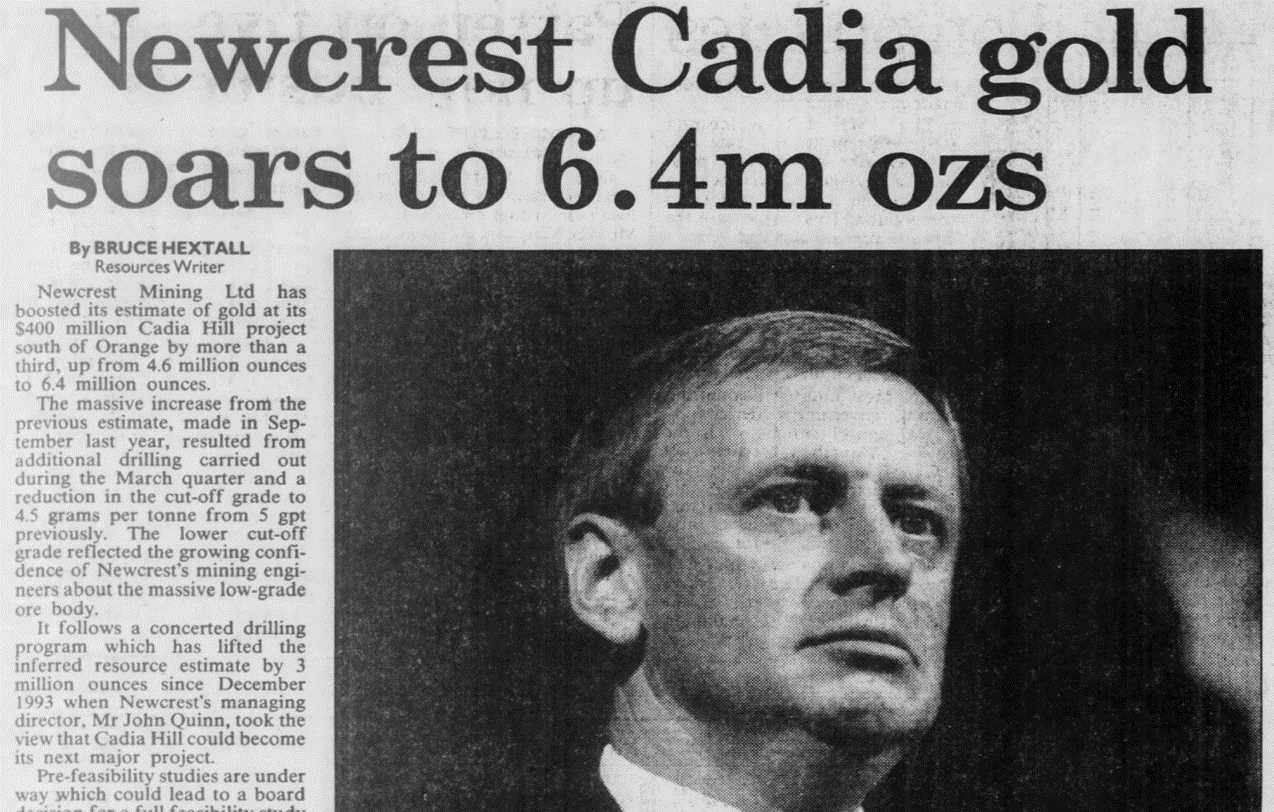The Discovery that made Newcrest: Cadia

The Discovery that made Newcrest: Cadia
In 1851, the fertile grounds of Cadia yielded a modest discovery of copper and gold, setting in motion a series of events that
In 1851, the fertile grounds of Cadia yielded a modest discovery of copper and gold, setting in motion a series of events that would shape the destiny of Newcrest Mining. Decades passed with sporadic production, but it wasn't until the mid-1960s that modern exploration efforts began, with Pacific Copper Limited focusing on the Big Cadia and Little Cadia deposits.
In 1986, BHP Gold Mines Ltd showed interest in the area after purchasing the nearby Browns Creek Mine. Despite initial rejection, persistent efforts by BHP Gold prompted increased exploration by Pacific Copper. Financial challenges led to the involvement of entrepreneur Alan Bond, who, facing difficulties, eventually sold the Cadia assets to FAI in 1990.
BHP Gold, now merged with Newmont Australia to become Newcrest, finally gained control over Cadia in 1990. The exploration team, led by Dan Wood, set ambitious goals during a strategy meeting in August 1991: discover 2 million ounces of gold in three years. Initially focusing on the "Big Cadia" deposit, attention shifted to Cadia Hill, where historic open-pit activity hinted at potential mineralization.
Despite skepticism due to size and grade concerns, Exploration Manager Dan Wood secured approval for an extensive program. Slowly but surely, Cadia Hill revealed itself as a substantial copper and gold discovery. In 1994, the project transitioned to a resource for mine development under the guidance of Dan Wood, John Holliday, and CEO John Quinn.
Newcrest invested $38 million in the discovery and borrowed $400 million to build a $440 million mine. Cadia Hill, while not a high-grade mine, boasted a low strip ratio, marking Newcrest's shift from exploration to mining.
Following the Cadia trend, geologists discovered another deposit along the trend in 1995. Initially facing concerns about grades, the mineral resource eventually grew to 4.6 million ounces of gold and 1.1 million tons of copper. A property-wide IP survey unveiled Cadia East under 200 meters of cover, leading to the discovery of Ridgeway.
Ridgeway, with its deep intersections and low-grade findings, posed challenges, but the team's intuition prevailed. Further drilling uncovered high spikes in copper and gold, eventually leading to the discovery of a significant deposit. The Ridgeway deposit, along with subsequent discoveries like Cadia Far East, transformed Newcrest into a major player in the gold and copper industry.
The Cadia deposits, initially targeted for 2 million ounces, burgeoned into a combined 86.7 million ounces of gold equivalent by 2018. Newcrest was recently taken over by Newmont for US17 billlion. The Cadia discoveries exemplify the unpredictable and transformative nature of mineral exploration, echoing John Holliday's words: "What is a Discovery in Mineral Exploration? A random & rare event, a product of an often chaotic process, and usually results from non-linear thinking.

